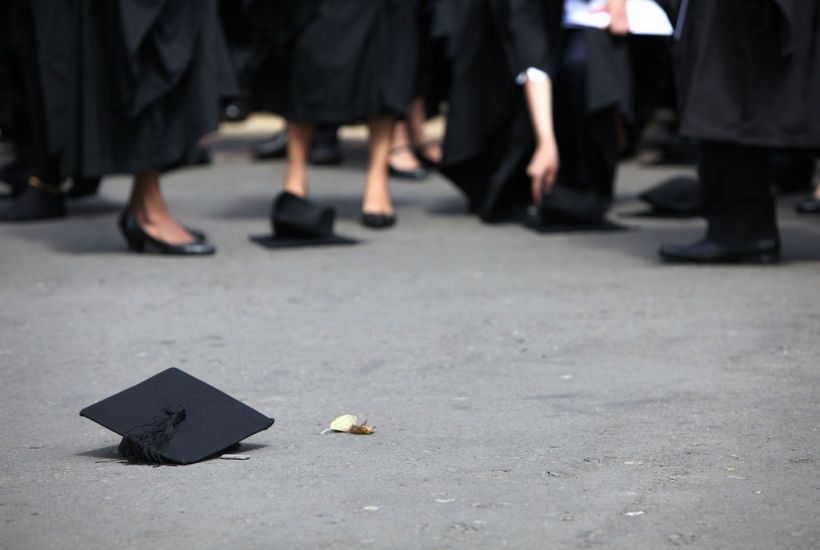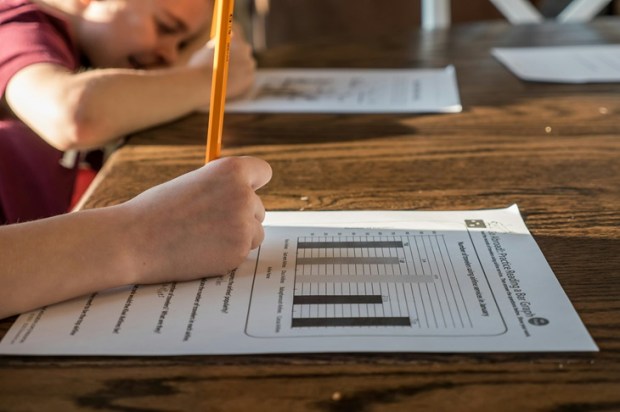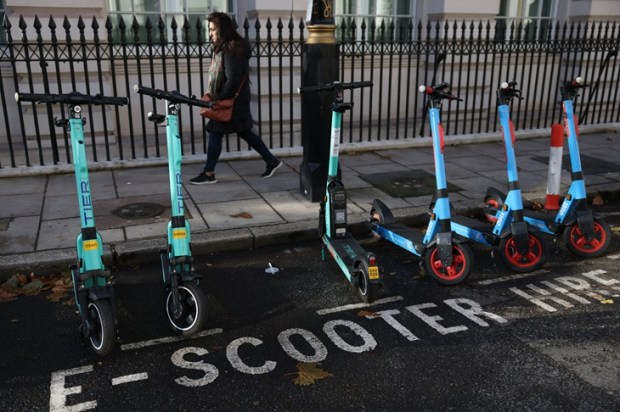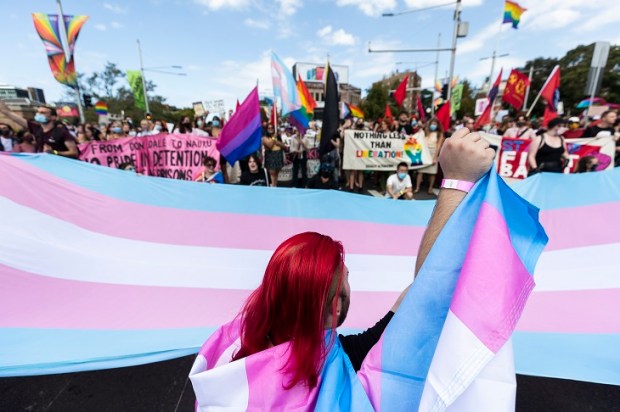World-renowned academic, Pierre Ryckmans, opined: ‘A university is a place where scholars seek the truth, pursue and transmit knowledge for knowledge’s sake – irrespective of the consequences, implications, and utility of that endeavour. The policing of language and thoughts, silencing of voices, and dismissal of viewpoints leads to madness…’
Sadly, the last part has become the modern perspective.
The government plans to significantly increase the number of students exposed to this modern perspective. As the number of university entrants climbs, the brainwashing continues to spread.
The advent of trigger warnings, safe spaces, microaggressions, preferred pronouns, cancel culture, along with the use of racist, fascist, homophobic or similar derogatory terms – adversely affects the opportunity for freedom of thought and speech.
The recent introduction of compulsory ‘cultural awareness’ programs at various Australian universities has meant that those who refuse to take part in what amounts to brainwashing cannot complete their courses. France has gone a step further than us, and introduced compulsory climate studies into the curriculum.
In Australia, the latest Woke attack on tradition has been to downgrade Australia Day and allow tutors to take another day in lieu (i.e., celebrate ‘Invasion Day’).
The University system has undergone a cultural change, with a massive increase in student numbers achieved by lowering entry standards. In the 1930s, 1 per cent of the population continued their studies at university. By the 1960s, this had increased to 10 per cent, and in the 70s and 80s this number doubled to around 20 per cent.
It was anticipated that this increase in university education across the demographic would bring greater economic growth and, at the same time, broaden employment opportunities. The latest figures for Australia suggest the participation rate in higher education is now over 36 per cent, and the Labor government has committed to increasing that to 55 per cent, with an extra 400,000 places, meaning there will be over 1.8 million students by 2050. This will no doubt result in extra costs for taxpayers and students as such ambitious figures can only be achieved by a further lowering of entry standards
The most obvious end result of a deliberate decline in admission standards has been disillusionment within the ranks of new students. Inappropriate courses frequently lead to a lack of employment with salaries necessary to repay their accumulated student debt. The current outstanding debt for 3 million Australian students is $74 billion, with some holding individual debts of over $100,000. This debt is index linked to the current rate 7.2 per cent.
With more students choosing university, fewer are applying for trade apprenticeships which is causing skill shortages. Of those who choose university, most are graduating with doctorates, with total numbers of 4,000 in 2000 now reaching over 10,000. Even with doctorates, many are finding employment difficult to achieve.
The obvious reason for this lack of employment is that the skills being taught are not what are needed by society. Degrees in art, literature, philosophy, history etc., may improve the mind, but it is probably not going to put food on the table.
Has the ‘education revolution’ produced the desired response, or should entry numbers be restricted to those who are capable of completing the subjects?
As the new habit of online study has increased, the opportunity for cheating has worsened along with it. One study revealed over 2,500 instances of cheeting from 2015 to 2019, and this has only worsened with the Covid pandemic normalising online learning as a teacher preference. When partnered with the increasing availability of artificial intelligence, such as ChatGPT, to fulfil assignments, it has become a perfect storm for dishonest students.
Employers are supposedly calling for ‘creativity and enquiry-based learning instead of students memorising facts’. Being proficient in activist causes such as gender identity and global warming, while simultaneously being largely illiterate and ignorant to the workings of Western Democracy (or, as they term it, Western Essentialism), does not equip someone for the workplace.
Surveys of academia in the US (where all future trends emanate), confirm the well-established bias in the system. A 2016 study of 40 leading American Universities looked at the ratio of left versus right politics withing professors of economics (4 times more likely), history (33 times more likely), journalism (20 times more likely), law (8 times more likely), and psychology (17 times more likely), with an average of 11 left to 1 right.
In 2018, another study at liberal arts colleges showed an even more pronounced ratio at 13 left-leaning to 1 right. Similar figures were reflected in a review of 900 campus administrators, with a 12 to 1 ratio.
This ideological approach to instruction limits educational diversity, which is the only area where diversity (of opinion) is not supported. A US student survey found 62 per cent felt of students felt unable to say what they believe if it does not fit the orthodoxy. An Australian study in 2019 showed similar trends with 59 per cent reporting they felt they were prevented from giving their opinions by other students. Even in Science and Technology sectors, 40 per cent of students noted there was irrelevant insertion of political content.
By 2022, the total bill from all levels of government for tertiary education for TAFE and University, was $40 billion; in addition, a further $3.6 billion was provided for education research, with much of that devoted to feminism, refugees, race politics, and other identity politics issues as part of the post-modernist agenda.
An assessment of salaries from Australian universities has found an explosion of bureaucracy compared with a historical ratio of around 20 per cent to 80 per cent. This has been achieved by a reduction in teaching staff, adding to the decline in standards.
A particular problem area are the entry standards to teaching courses. These have progressively declined leading, unsurprisingly, to a reduced standard of teachers. Only 50 per cent of those who start a teaching course complete it, and 30 per cent of those who do complete move on within 5 years. Meanwhile, the number studying for jobs in the STEM field (Science, Technology, Engineering, and Maths) is not keeping pace with demand, leading to a decline in the skills of teaching in those disciplines and a downward spiral in outcomes. An estimated 35 per cent of teachers are teaching science out-of-field subjects. Demand for those more challenging skills in the workplace is being filled by skilled immigrants.
The previous government had belatedly addressed this unmet demand by reducing study costs for science courses and increasing charges for humanities. It was also looking more closely at post-graduate research.
Currently the ‘mass-produced, Woke-ready graduates’ are prepared for life as an academic, a bureaucrat, or human resources officer. In other words, nothing productive… They know nothing but criticise everything.
The huge number of overseas students, who studied here before Covid, undermined the education ethos and turned universities into businesses, leaving the money-men (vice-chancellors) in charge rather than academics. Their salaries have risen to the $1 million plus, far higher than the academics who teach.
Universities adjusted badly to falling numbers from overseas, which were, in the short-term, replaced by local students through a further fall in admission standards. The gravy train has now recommenced. Admin salaries will also be secured by the prospect of increased domestic student numbers.
Will the inevitable further decline in numbers of tradies make ‘hands on’ activities, such as building, even more problematic? Will more degree courses lead to a prosperous future, or will artificial intelligence and soaring immigration result in increasing unemployment? One question we can answer for sure, the taxpayers will pay more.
Got something to add? Join the discussion and comment below.
Get 10 issues for just $10
Subscribe to The Spectator Australia today for the next 10 magazine issues, plus full online access, for just $10.


























Comments
Don't miss out
Join the conversation with other Spectator Australia readers. Subscribe to leave a comment.
SUBSCRIBEAlready a subscriber? Log in